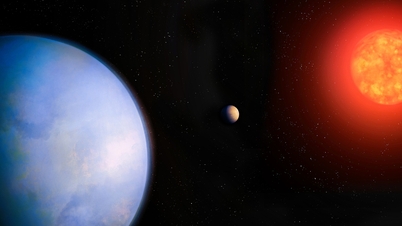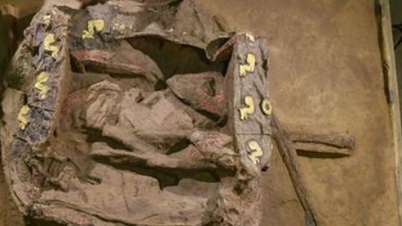The discovery of the first exomoon by a team at Columbia University has been met with skepticism from some other astronomers.

Simulation of an exomoon orbiting a planet outside the solar system. Image: NASA GSFC/Jay Friedlander and Britt Griswold
Astronomers have always known that finding moons around exoplanets would be a major achievement, but now a debate has erupted in the field of planetary science that shows just how difficult it is to spot exomoons, according to Live Science . The story began in 2018, when a team of researchers including David Kipping, an assistant professor of astronomy at Columbia University, believed they had discovered the first exomoon. The object orbits the exoplanet Kepler-1625b, a Jupiter-like world about 8,000 light-years from Earth. The object was initially found using the Kepler space telescope.
When discovered, Kepler-1625b's moon was named "Kepler-1625 b I." It was later further confirmed using data from the Hubble Space Telescope. In 2022, another team including Kipping appeared to find a second exomoon, this time using Kepler alone. This object orbits Kepler-1708 b, a gas giant 5,400 light-years from Earth with a mass 4.6 times that of Jupiter. The second potential exomoon is also named "Kepler-1708 b I" like the first moon.
The technique used to detect the two exoplanets is similar to the transit method, which has so far added more than 5,000 planets to the exoplanet catalog. The transit method relies on detecting slight dips in the star’s light that result when a planet moves in front of the star from Earth’s perspective. The same principle applies to exomoons, albeit on a much smaller scale. If these moons are in the right position around their planet when it transits, this will also cause a slight dip in light.
However, such small dips in light are a clue to the existence of Kepler-1625 b I and Kepler-1708 b I for the exomoon camp. However, the dips caused by exomoons are so small that they cannot be observed directly. Instead, researchers need to use powerful computer software algorithms to find them from telescope data.
Kipping said that both his team and the opposing team led by René Heller used the same data set from the same telescope, but the disappearance of Kepler-1625 b I and Kepler-1708 b I could be due to the way the teams processed the data using their algorithms. Kipping suggested that they may have missed Kepler-1708 b I because of the software they chose to analyze the Hubble and Kepler data. While related to the software Kipping’s team used, Heller’s software is slightly different. Kipping also suggested that Heller’s team use their software because it is generally very reliable outside of its default settings and sensitive to some of the steps used to process the data. This could explain why exomoons were overlooked in the calculations.
For Kepler-1625 b I, Heller and his colleagues suggested using the "stellar limb darkening" effect, in which the edge of a star is darker than its center, to influence the exomoon signal. Heller's team argued that this effect better explains observations of the host star than dimming caused by an exomoon. Kipping said that this approach is not appropriate for a potential exomoon because his team considered the stellar limb darkening effect when describing the existence of Kepler-1625 b I. Heller and his team do not believe that Kepler-1625 b I and Kepler-1708 b I exist.
At least, both Heller and Kipping agree, the research should continue. The reason exomoons show up in transits is because they are massive objects as large as sub-Neptune, 1.6 to 4 times the diameter of Earth. If they exist, they are massive. Kipping thinks that’s part of the reason they’re too unusual to be considered the first exomoon discovery. He plans to use the James Webb Space Telescope (JWST) to search for more exomoons that are more like moons in our solar system.
An Khang (According to Live Science )
Source link












































































































Comment (0)